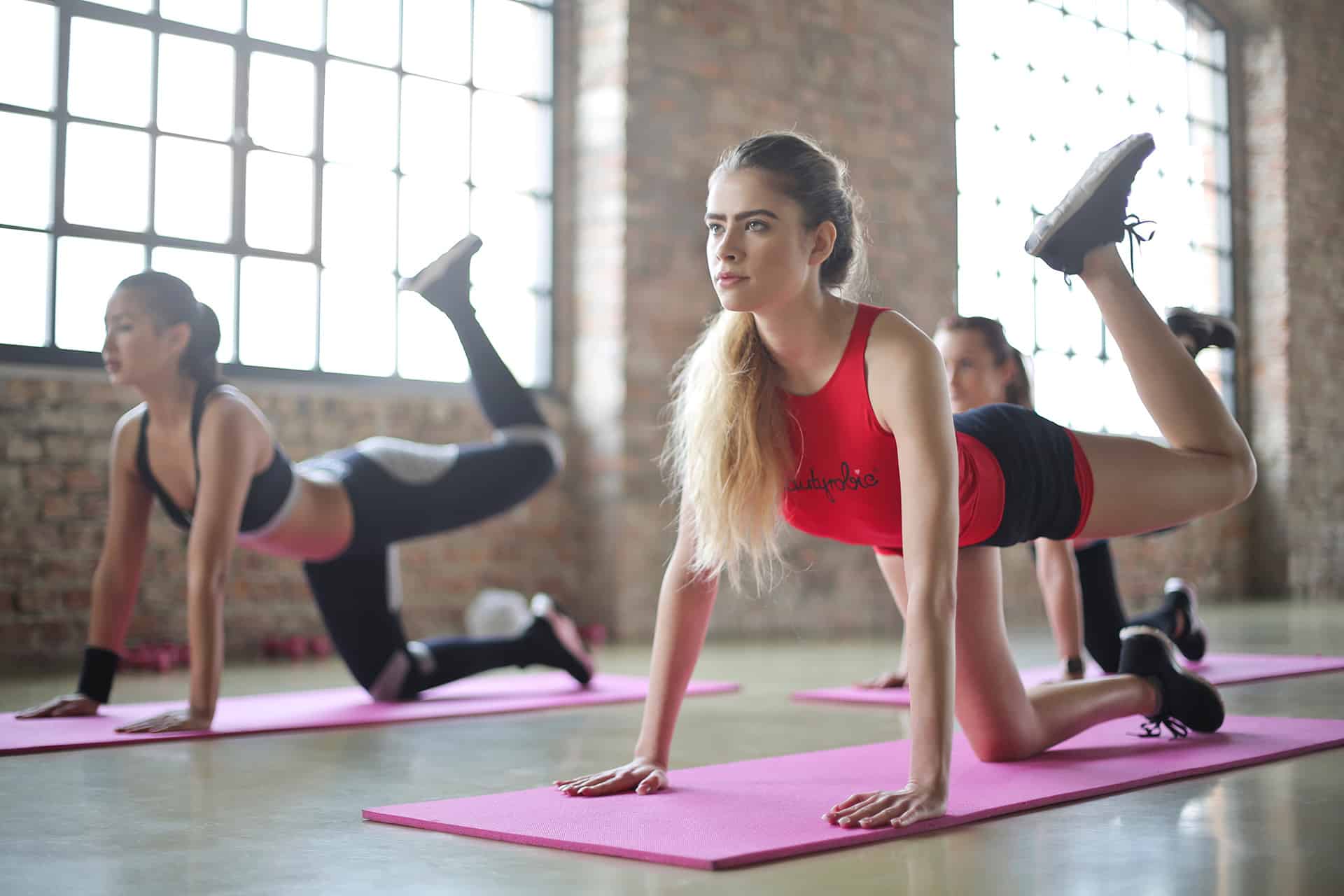Setu Bandha Sarvangasana
This pose takes its name from the Sanskrit for dam or bridge, ’setu’, and the word ‘bandha’ which means to lock.
- Lie on your back on the floor, and if necessary, place a thickly folded blanket under your shoulders to protect your neck. Bend your knees and rest your feet on the floor hip distance apart, make sure your feet are pointing straight ahead.
- Exhale and, pressing your inner feet and arms actively into the floor, push your tailbone upward toward the pubic bone, firming (but not hardening) the buttocks, and lift the buttocks off the floor. Keep your thighs and inner feet parallel. You can clasp your hands below your pelvis and extend through the arms to help you stay on the tops of your shoulders, if you like.
- Lift your buttocks until the thighs are about parallel to the floor. Keep your knees directly over the heels, but push them forward, away from the hips, and lengthen the tailbone toward the backs of the knees.
- Lift your chin slightly away from the sternum and, firming the shoulder blades against your back. Externally rotate your shoulders lifting your chest toward your face (keep the back of your neck in neutral rather than trying to tuck the chin into the chest)
- Stay in this pose anywhere from 30 seconds or up to 1 minute, if that is comfortable. Release with an exhalation, rolling the spine slowly down onto the floor.
Balasana (child’s pose)
‘Bala’ means child in Sanskrit.
- Kneel on the floor. Touch your big toes together and sit on your heels, then separate your knees about as wide as your hips.
- Exhale and move your torso down between your thighs. Bring your belly to rest between your thighs and bring the forehead down to the floor.
- There are two possible arm variations: Either stretch the arms in front of you with the palms toward the floor or bring the arms back alongside the thighs with the palms facing upwards. Do whichever feels the most comfortable for you.
- Balasana is a resting pose. Stay anywhere from 30 seconds to a few minutes. To come up, first lengthen the front torso, and then with an inhalation lift from the tailbone as it presses down and into the pelvis.
Savasana (corpse pose)
‘Sava’ means corpse in Sanskrit.
- Lie down on your back and let your feet fall out to either side. Try to make sure that the feet are turned out evenly.
- Bring the arms alongside the body, but slightly separated from the body, and turn the palms to face upwards. Stretch the arms away from the space between the shoulder blades. Rest the backs of the hands on the floor as close as you comfortably can to the index finger knuckles. Make sure the shoulder blades are resting evenly on the floor.
- Make sure the shoulder blades are resting evenly on the floor. Imagine the lower tips of the shoulder blades are lifting diagonally into your back toward the top of the sternum. From here, spread the collarbones.
- Relax the whole body, including the face. Let the body feel heavy. Let breathing occur naturally.
- Stay in this pose for 5 minutes for every 30 minutes of practice. To exit this pose, exhale and bring the knees into the chest and roll over to one side, keeping the eyes closed. Take 2 or 3 breaths. With another exhalation press your hands against the floor and lift your torso, dragging your head slowly after. The head should always come up last.
